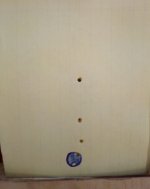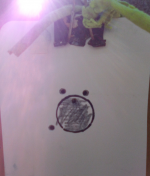I like a 40 yard zero. It has just the slightest bit of hold-under at 33 yards, but in all actuality it is less than the thickness of the pellet. At your pellet's speed a 40 yard zero carries a 2" arc from 12 yards to 52 yards, and only a 1" arc between 17 and 47 yards, which is ideal for hunting in the woods. No matter what the zero is, get a "dope chart" printed (with the zero that you settle on) and you'll have the required hold over elevation for given yardages at your fingertips for shooting or studying. FYI, the Windage Inch in the chart is for a 5 mph cross wind.

Upvote 0

